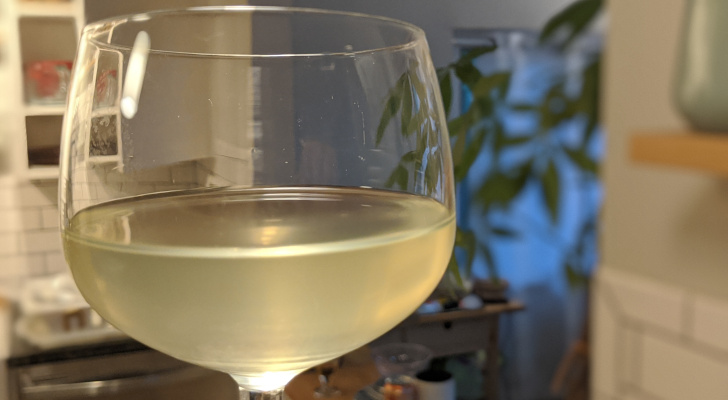I love dry, rustic, funky ciders. This style is a small but growing segment of the commercial market, still quite hard for me to find reliably, and expensive when I do find it. Home brewing to the rescue! If the market isn’t producing what you want, produce it yourself.
Last year, I did a two hasty experiments into non-traditional cider fermentation. One of them is in the top three ciders I’ve ever tasted! The other is a drain pour. So it goes when you experiment sometimes.
In 2020 I’m going all in on funky cider with 4 different single-strain 100% Brett batches. That post is coming soon. For today, I wanted to share some my experiences from last year: some lessons learned, what worked and what didn’t.
Background
This time last year, I was really starting to get interested in brewing mixed fermentation beers.
While I was researching the topic, I found a variety of blog posts about people’s experiences brewing cider with Brett and/or sour bacteria [1] [2] [3]. There was one stand out blog that pushed me over the edge to trying this myself: Funk Factory’s fantastic tasting panel of 11 different 100% Brett ciders.
The post is a bit old and some of the strains they used are hard to come by now, but one of their favorites was the still widely available WY5112 Brett Brux. I decided I’d try making a cider with WY5112 and a little later on in the fall I started a second batch with a Sacch/Brett blend.
The Good
Some mistakes were made here, so this certainly isn’t a how-to, but it did turn out well in the end.
I started with five gallons of local fresh cider from Larriland farm. It was pasteurized, but it tasted great. I was optimistic for the hard cider possibilities. OG was 1.049.
I pitched a pack of WY5112 Brett Brux, no starer, no yeast nutrient. I would not recommend copying this procedure.. After three days of no activity I got nervous and ran out to the homebrew store for more Brett to get things moving. What I found was OYL-210 “where da funk” which is a Sacch/Brett blend. Having Saccharomyces, it wasn’t quite what I wanted, but it was what I could get on the day.
I left the cider to ferment at room temp, upper 60’s Fahrenheit, for a few months.
I was frustrated to measure the gravity several times over the winter, and see that it was always ~1.003. Never quite low enough that I felt confident bottling it. A few months in, the gravity samples were tasting great though. I decided I would just keg this batch. After that, I conditioned it all spring and summer, waiting for fall to tap the keg.

And here we are. Wow, This cider is incredible! I fear I may have peaked in the cider game and may never attain this quality again. It is dry, tart, intensely apple-y, and overall just unique and delicious. For my palate this is just about perfect.
The Bad
From the one of the best things I’ve ever brewed, let us turn briefly to one of the worst. It’s kind of incredible that both of these started with the same fresh cider as a base.
My second cider of 2019 was a last minute plan when I realized I was about to transfer a beer off of an old yeast cake of Imperial Sour Batch Kidz. This beer was about 5 months old, and I didn’t really like the way it was tasting. I had accidentally killed off the Lacto by over-hopping the original beer, and overall something was just off with the rest of the ferment. I don’t really want to blame it on Imperial. I think this was just an off batch for me.
In any case, I don’t know why I thought these old stressed microbes would do anything good with some cider, when I didn’t like the beer they had made, but I was in a mood to experiment. Primary fermentation seemed to go ok. The cider came out drier than the first batch, 0.999, so I bottled it.
Unfortunately, it’s kind of gross, and not improving with time. I can’t put my finger on the exact compound responsible here but I think it almost smells… fecal? After a year of aging, this aroma has not diminished at all. Other than the off flavors, the rest of the cider is very dull. Quite muted apple flavor/aroma. No redeeming qualities really.
Every few months, I crack open a bottle to see if it’s gotten better, and it’s always the same. One of these days I think I’ll just dump the rest.
The Future
Some takeaways from my first year of funky cider brewing and research:
- Many homebrew packs of Brett have very low cell counts, and Brett grows slowly. Know what cell count you’re starting with and plan for a multi-stage starter if necessary for your chosen strain.
- Cider has no complex sugars. If there is Saccharomyces present, it’s going to quickly ferment everything, leaving little for the slow moving Brett. Brett might still make some minor contributions in this case, but you wannt Brett to play a significant role in your cider I think you either need a 100% Brett fermentation, or to add some maltodextrin when using a blend with Sacch.
- Yeast nutrient is recommended for cider fermentations. I didn’t use it here but I wish I had.
- I suspect, but am not 100% certain, that the Sacch strain in OYL-210 is Sacch Trois, available solo as WLP644. I think that’s likely responsible for the majority of flavors in my good cider, and I’d be curious to try it on its own some time.
For 2020, I have already brewed four test batches of single strain Brett cider, with WY5112, WLP645, Bootleg Funk Weapon 2, and Bootleg Funk Weapon 3. I look forward to reporting on those results soon!